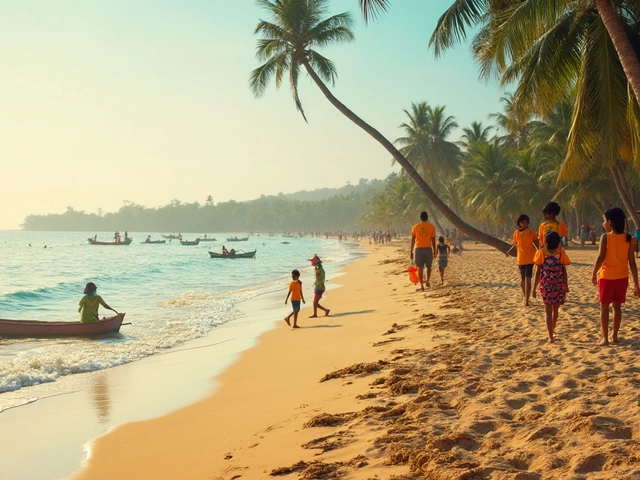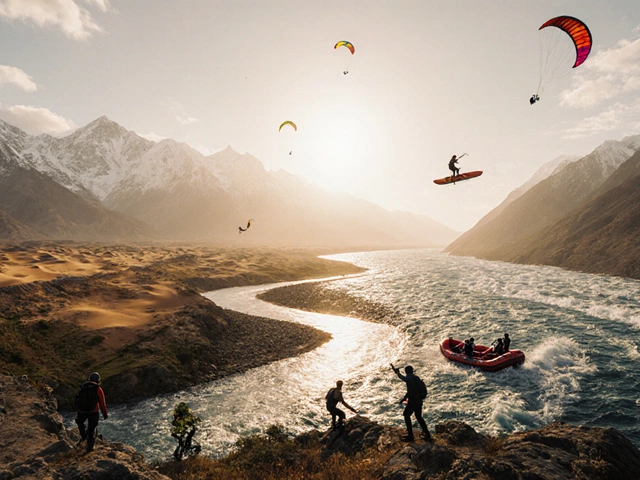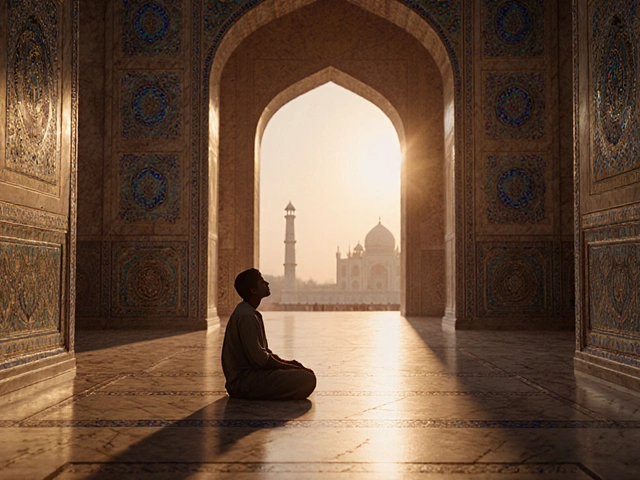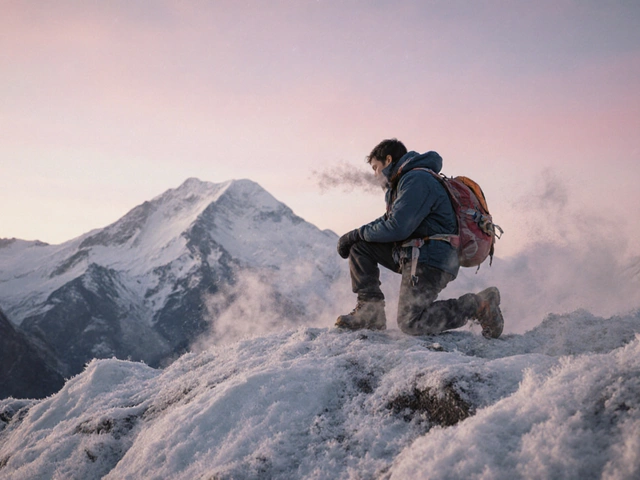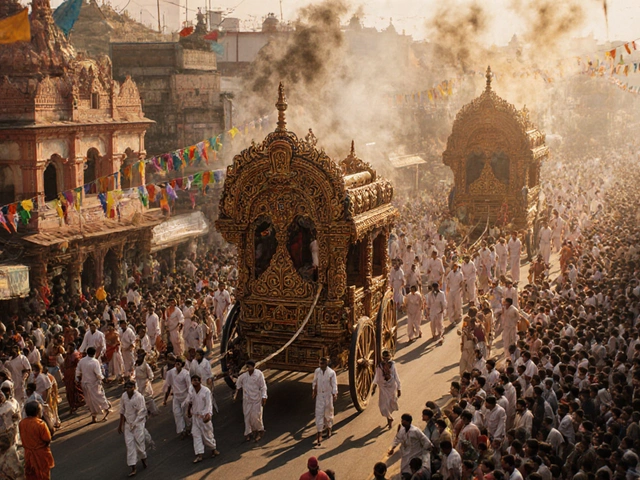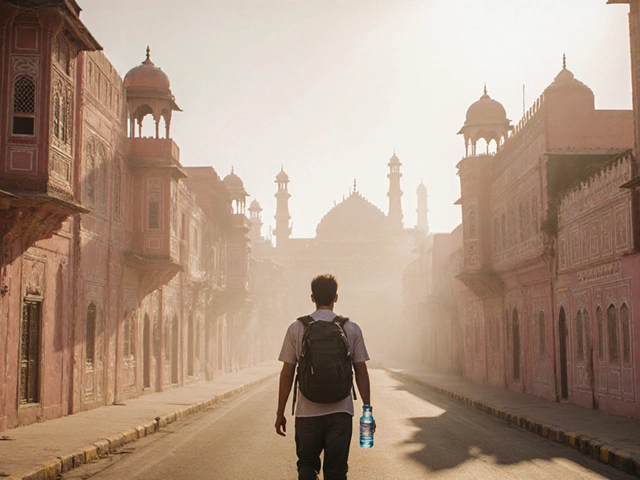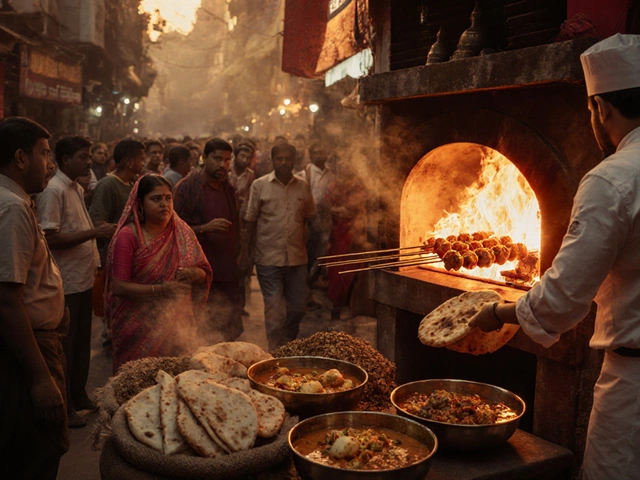Indian Food Safety Checker
Check Food Safety for Travelers
Select any food item to see if it's safe for Americans to eat in North India according to CDC guidelines
When Americans first land in North India, the smell of cumin, cardamom, and sizzling garlic hits them before they even step off the plane. The streets buzz with samosas frying in hot oil, tandoori chicken rotating on spits, and chai sellers calling out from every corner. It’s overwhelming. And for many, the biggest question isn’t where to eat-it’s what they can actually eat without getting sick.
Start with the classics-safe and familiar
You don’t have to risk your stomach to enjoy Indian food. Many dishes are naturally safe for travelers, especially if you pick them wisely. Tandoori chicken, grilled on high heat in a clay oven, is one of the safest bets. The intense heat kills bacteria, and the meat is usually cooked through. Same goes for kebabs-look for ones that are piping hot and served straight off the grill.
Naan bread, fresh from the tandoor, is another winner. It’s baked at over 480°F, so it’s sterile and soft. Pair it with dal (lentil stew) or paneer curry-both are cooked slowly in boiling liquids, making them low-risk. Paneer, the Indian cottage cheese, is usually made from boiled milk and doesn’t contain raw ingredients. It’s mild, creamy, and a great protein source for Americans used to cheese or tofu.
Chana masala, a spiced chickpea dish, is another crowd-pleaser. It’s served hot, packed with flavor, and rarely contains raw veggies. Rice is generally safe too, especially if it’s freshly cooked and served steaming hot. Avoid rice that’s been sitting out, even for an hour.
Street food? Yes-but be smart
North India’s street food is legendary. But Americans often hear horror stories. The truth? You can eat street food safely if you follow a few simple rules.
Look for stalls with a long line of locals. If Indians are waiting 15 minutes for a plate of pani puri, it’s probably clean and fresh. Watch how they handle the food. Are they using tongs? Are they wearing gloves? Is the water they use for washing ingredients clearly boiled? These are your signs.
Try pani puri-the tiny crispy shells filled with spicy water, tamarind chutney, and potatoes. It’s made fresh in front of you, served immediately, and rarely causes issues if the water is filtered. Aam panna (raw mango drink) is another good pick-it’s made with boiled water and natural ingredients. Avoid anything with raw vegetables like salads or unpeeled fruits unless you’re eating at a hotel with a known kitchen.
Don’t eat fruit you can’t peel yourself. Bananas and oranges are fine. Apples and strawberries? Skip them unless you’re sure they’ve been washed in purified water. Same with ice. If it’s not made from filtered or bottled water, avoid it. Most decent restaurants use ice from trusted suppliers, but street vendors? Not always.
What to avoid-plain and simple
Some dishes are just not worth the risk, especially on your first trip. Stay away from:
- Raw or undercooked meat (including kebabs that look pink inside)
- Unpasteurized dairy like fresh yogurt or paneer from roadside vendors
- Salads and raw vegetables unless served at a high-end hotel or restaurant
- Tap water-even for brushing teeth
- Smoothies or juices made with tap water or unpeeled fruit
- Seafood in inland cities like Delhi or Jaipur-freshness is hard to guarantee
These aren’t hard-and-fast rules for everyone. Some travelers eat everything and never get sick. But for most Americans, especially first-timers, avoiding these items cuts your risk of traveler’s diarrhea by over 70%, according to a 2023 study by the Centers for Disease Control and Prevention.
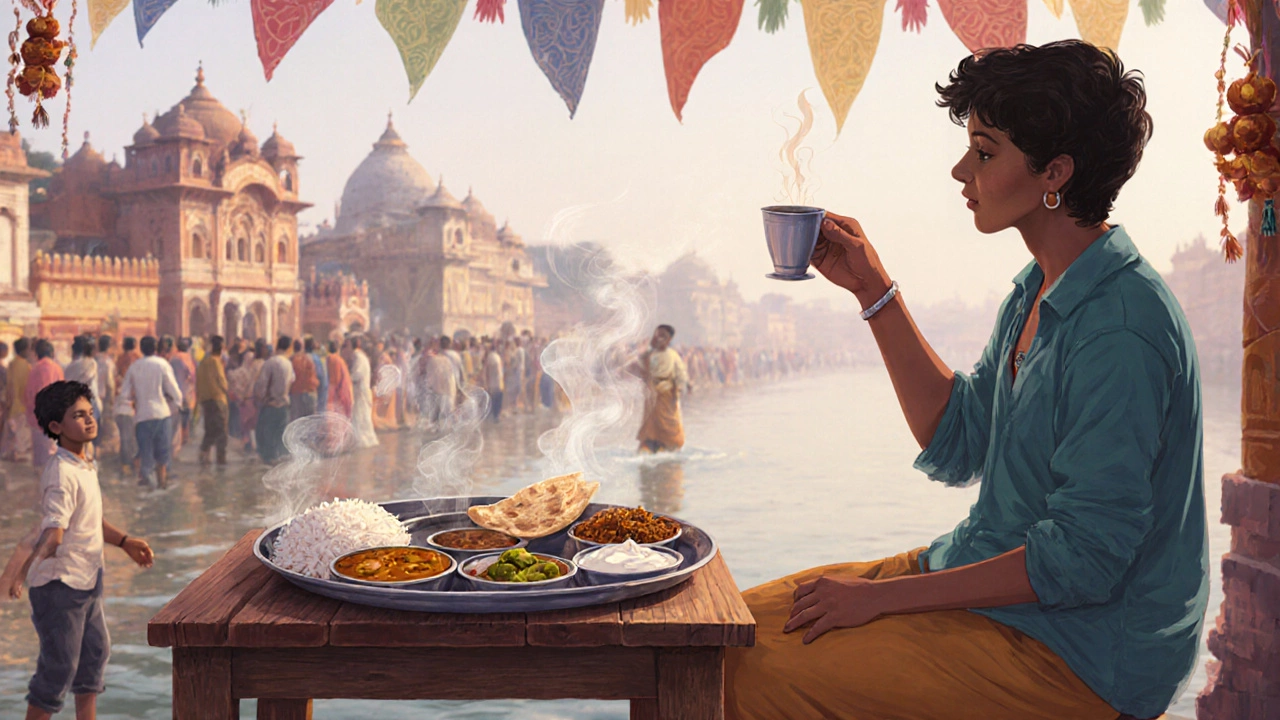
Hotels and restaurants: Your safe zones
If you’re staying at a mid-range hotel or a tourist-friendly restaurant, you’re already in a safer zone. Most places catering to Western travelers use filtered water, pasteurized dairy, and pre-washed produce. Ask for bottled water-even if they say it’s purified. Bring your own if you’re unsure.
Chain restaurants like Indian Accent, Moti Mahal Delux, or even McDonald’s in Delhi serve food that meets international hygiene standards. You’ll find familiar flavors with Indian twists-like paneer burgers or masala fries. These places are great for a comfort meal after a long day of sightseeing.
Don’t feel guilty for sticking to these spots. Eating safely doesn’t mean missing out. Many of these restaurants serve authentic dishes made with the same spices and techniques as home kitchens. The difference? They control the water, the storage, and the prep.
What Americans love most-real food, real experience
Most Americans who visit North India don’t just want to eat-they want to feel like they’re part of the culture. And food is the fastest way in.
Try a thali in Varanasi-a metal plate with small bowls of dal, rice, roti, pickle, yogurt, and a sweet. It’s a full meal, and it’s served hot. Or grab a plate of chole bhature in Delhi-spicy chickpeas with deep-fried bread. It’s messy, it’s filling, and it’s unforgettable.
Breakfasts are easy too. Poha (flattened rice cooked with turmeric and peanuts) is light, savory, and safe. Upma (semolina porridge with veggies) is another favorite. Both are cooked in boiling water and served steaming hot. Pair them with chai-Indian tea boiled with milk, ginger, and cardamom. It’s not just a drink; it’s a ritual.
And yes, you can find peanut butter and jelly sandwiches in tourist areas. But why? You’re in India. Eat the food that’s been feeding people here for centuries.
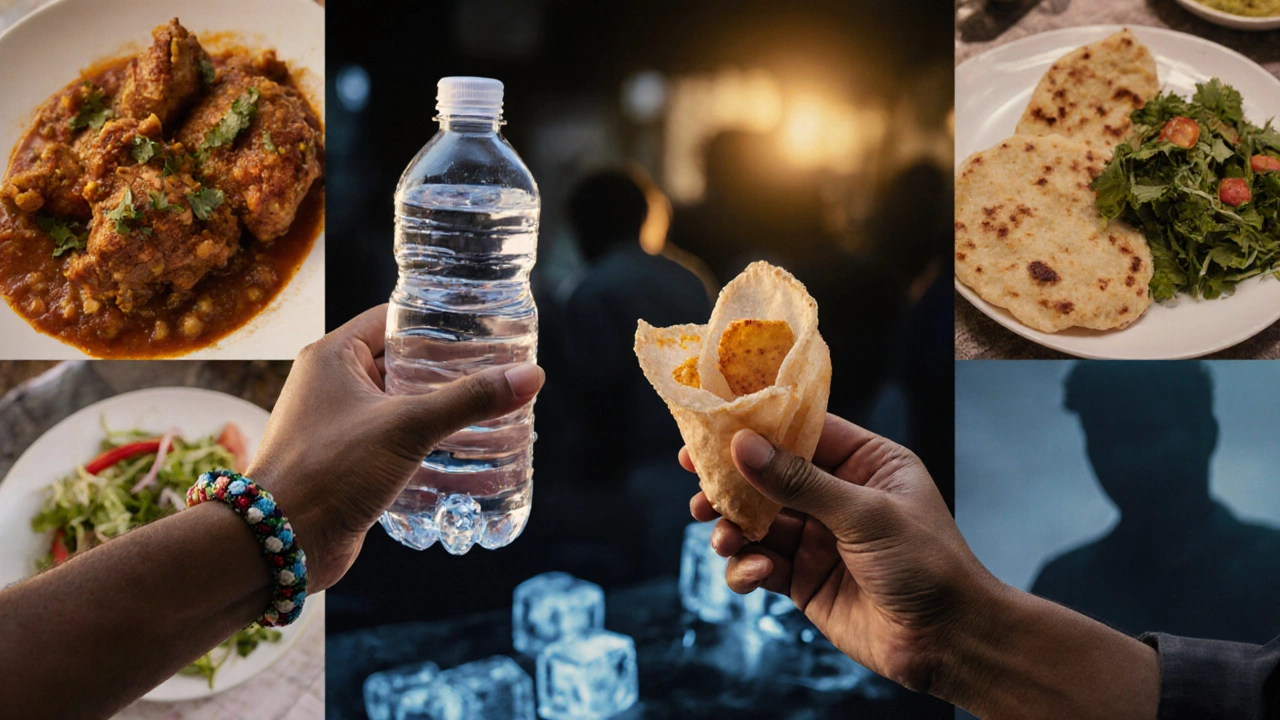
Bring your own meds-and know what to do
Even if you’re careful, stomach bugs happen. Pack a small kit: oral rehydration salts, loperamide (Imodium), and a broad-spectrum antibiotic like ciprofloxacin (get a prescription before you leave). Don’t wait until you’re sick to figure this out.
If you do get sick, drink lots of bottled water. Rest. Avoid dairy and spicy food for 24 hours. Most cases clear up in 2-3 days. Hospitals in Delhi, Agra, and Jaipur have English-speaking staff and treat tourists regularly. Don’t panic. Just be prepared.
Final tip: Trust your gut-literally
Your body will tell you what’s safe. If something looks off, smells strange, or feels cold when it should be hot, walk away. Don’t feel pressured to try everything. The goal isn’t to eat every dish-it’s to eat well, safely, and enjoy the experience.
North India’s food is one of its greatest gifts. It’s bold, layered, and alive. You don’t need to risk your health to taste it. Just be smart, stay curious, and let the flavors guide you.
Can Americans eat Indian street food without getting sick?
Yes, but only if you follow basic safety rules. Stick to stalls with high turnover and local crowds. Make sure food is cooked fresh and served steaming hot. Avoid raw vegetables, unpeeled fruit, and ice unless you’re sure it’s made with purified water. Pani puri, tandoori items, and freshly made chai are generally safe choices.
What Indian dishes are safest for Americans with sensitive stomachs?
Tandoori chicken, dal, paneer curry, naan, rice, chana masala, poha, and upma are among the safest. These dishes are cooked at high heat, served hot, and rarely contain raw ingredients. Stick to boiled or grilled proteins and avoid anything with raw veggies or uncooked dairy.
Is tap water safe for brushing teeth in North India?
No. Even if the water looks clean, it may contain bacteria or parasites your body isn’t used to. Always use bottled or filtered water for brushing your teeth, rinsing your mouth, or making ice. Most hotels provide bottled water-use it for everything except showering.
Can I find American-style food in North India?
Yes, especially in tourist areas like Delhi, Agra, and Jaipur. Many restaurants serve burgers, pasta, pizza, and sandwiches. Chains like McDonald’s and Subway are common. But why settle for that? The real experience is in the local food-spicy, aromatic, and deeply satisfying. Try one new dish every day instead.
What should I pack to prevent food-related illness?
Pack oral rehydration salts, loperamide (Imodium), and a prescription antibiotic like ciprofloxacin. Bring bottled water for drinking and brushing teeth. Consider activated charcoal pills-they help absorb toxins if you feel sick. Avoid alcohol and dairy if your stomach is upset. Most cases resolve in 2-3 days with rest and hydration.

